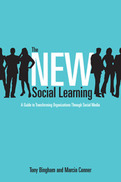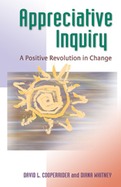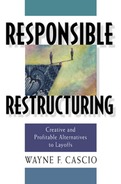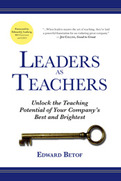Tony Bingham and Marcia Conner explain why social media is the ideal solution to some of the most pressing educational challenges organizations face today, such as a widely dispersed workforce and striking differences in learning styles, particularly across generations. They definitively answer common objections to using social media as a training tool and show how to win over even the most resistant employees. Then, using examples from a wide range of organizations -- including Deloitte, IBM, TELUS, and others -- Bingham and Conner help readers sort through the dizzying array of technological options available and decide when and how to use each one to achieve key strategic goals.
Social media technologies -- everything from 140-character "microsharing" messages to media-rich online communities to complete virtual environments and more -- enable people to connect, collaborate, and innovate on levels never before dreamed of. They make learning dramatically more dynamic, stimulating, enjoyable, and effective. This greatly anticipated book helps organizations create a contemporary learning strategy that is as timely as it is transformative.
-
The first book to help organizations understand and harness the extraordinary workplace learning potential of social media
-
Cowritten by the CEO of the world's largest workplace learning organization and a consultant and writer with extensive experience on the forefront of workplace learning technology
-
Features case studies showing how organizations around the world have transformed their businesses through social media
Most business books on social media have focused on using it as a marketing tool. Many employers see it as simply a workplace distraction. But social media has the potential to revolutionize workplace learning. People have always learned best from one another -- social media enables this to happen unrestricted by physical location and in extraordinarily creative ways. The New Social Learning is the most authoritative guide available to leveraging these powerful new technologies.
Tony Bingham and Marcia Conner explain why social media is the ideal solution to some of the most pressing educational challenges organizations face today, such as a widely dispersed workforce and striking differences in learning styles, particularly across generations. They definitively answer common objections to using social media as a training tool and show how to win over even the most resistant employees. Then, using examples from a wide range of organizations -- including Deloitte, IBM, TELUS, and others -- Bingham and Conner help readers sort through the dizzying array of technological options available and decide when and how to use each one to achieve key strategic goals.
Social media technologies -- everything from 140-character "microsharing" messages to media-rich online communities to complete virtual environments and more -- enable people to connect, collaborate, and innovate on levels never before dreamed of. They make learning dramatically more dynamic, stimulating, enjoyable, and effective. This greatly anticipated book helps organizations create a contemporary learning strategy that is as timely as it is transformative.
2005
- By the author of the bestselling classic Evaluating Training Programs
- Addresses today's most difficult training challenge: transferring what's taught to actual employee performance
- Includes best practice case studies from a dozen top-performing companies
Donald Kirkpatrick's famous four level model has become the model for evaluating the effectiveness of training programs. In Transferring Learning to Behavior, Donald and his son James show how this model can be used to confront what has always been the most difficult training challenge: getting people to apply what they learn once the training is over.
This book begins with an overview of the current state of the four levels, and outlines the three main reasons for the fatal disconnect between learning and behavior. Part II describes the five foundations for success that must be in place before moving on to confront the true challenge of transferring learning to behavior. Part III addresses the main question, showing precisely how to ensure that there is organizational support, and employee and managerial accountability, for putting the new behaviors into practice. The book closes with 12 best-practice case studies from companies such as Toyota, First USA Bank, Nextel, and Anthem Blue Cross/Blue Shield, that bring alive the concepts, principles, and techniques presented throughout the earlier chapters.
Now, more than ever, the pressure is on to demonstrate concrete results from training--but techniques like Return on Investment calculations aren't impressive if it's obvious that new behaviors aren't becoming business as usual. Transferring Learning to Behavior shows how an already proven model can be applied to solve this most difficult problem and produce concrete results.
- By the author of the bestselling classic Evaluating Training Programs
- Addresses today's most difficult training challenge: transferring what's taught to actual employee performance
- Includes best practice case studies from a dozen top-performing companies
Wayne Cascio explodes thirteen common myths about downsizing, detailing its negative impact on profitability, productivity, quality, and on the morale, commitment, and even health of survivors. He uses real-life examples to illustrate successful approaches to responsible restructuring used by companies such as Charles Schwab, Compaq, Cisco, Motorola, Reflexite, and Southwest Airlines. And he offers specific, step-by-step advice on what to do-and what not to do-when developing and implementing a restructuring strategy that, unlike layoffs, leaves the organization stronger and better able to face the challenges ahead.
- Explodes thirteen myths about the supposed benefits of downsizing
- Details the specific strategies companies such as Charles Schwab, Compaq, Cisco, Motorola, Reflexite, and others used to restructure responsibly
- Includes practical checklists of dos and don'ts for responsible restructuring
2001
- Sequel to the bestselling How to Get Ideas (more than 40,000 copies sold)
- Introduces a revolutionary concept of leadership: a leader's most important tasks are to make employees believe that they are creative and make it fun to come to work
- Short, simple, and fun to read with dozens of proven, easy-to-implement techniques that will make employees more creative
2009
Every business understands the value of connecting its top leaders to other established and high-potential leaders in the organization. Becton, Dickinson and Company had its leaders make this vital connection in a unique and highly effective way -- through teaching.
Offers a compelling implementation roadmap and includes detailed plans, worksheets, exercises, complete sample training outlines, and other useful tools that speed the transition to leaders as teachers
Dozens of sidebars throughout the book present the participation experiences of leaders at all levels, frequently asked questions (FAQs), and personal testimonials of those who have benefited from participation in the leaders as teacher program.
Most business professionals understand the value of connecting their top leaders to other established and high potential leaders in the organization. Becton, Dickinson and Company (BD), a $6.5 billion medical technology company with 28,000 employees, believes its leaders should make this vital connection in a unique and highly effective way – through teaching. Leaders as Teachers chronicles BD’s 8-year journey to create and deploy a leadership development program that relies on all top leaders (even its CEO) to train other leaders. The initiative, led by author Edward Betof , BD’s vice president and chief learning officer, has produced dramatic results, including measurable business results, a stronger and more supportive learning environment, improved communications and strengthened organizational culture, a more adaptive and change-receptive leadership team, and direct cost savings for the organization.
In addition to its compelling story of change, Leaders as Teachers offers a roadmap for other organization wishing to implement and benefit from BD’s experience. This complete roadmap includes detailed advice on how to introduce the leaders as teachers program and advice on how to overcome resistance to change; how to select, recruit, and train new leaders for the program; and how to evaluate the effectiveness of a fully functioning program. The book provides all the necessary tools, including detailed plans, worksheets, exercises, complete sample training outlines, and extra materials that speed the transition to leaders as teachers and take full advantage of BD’s extensive experience. Dozens of sidebars throughout the book present the participation experiences of BD’s leaders at all levels, frequently asked questions (FAQs), and personal testimonials of those who have benefited from participation in the leaders as teacher program.
• Offers a compelling implementation roadmap and includes detailed plans, worksheets, exercises, complete sample training outlines, and other useful tools that speed the transition to leaders as teachers
• Dozens of sidebars throughout the book present the participation experiences of leaders at all levels, frequently asked questions (FAQs), and personal testimonials of those who have benefited from participation in the leaders as teacher program.
Most business professionals understand the value of connecting their top leaders to other established and high potential leaders in the organization. Becton, Dickinson and Company (BD), a $6.5 billion medical technology company with 28,000 employees, believes its leaders should make this vital connection in a unique and highly effective way – through teaching. Leaders as Teachers chronicles BD’s 8-year journey to create and deploy a leadership development program that relies on all top leaders (even its CEO) to train other leaders. The initiative, led by author Edward Betof , BD’s vice president and chief learning officer, has produced dramatic results, including measurable business results, a stronger and more supportive learning environment, improved communications and strengthened organizational culture, a more adaptive and change-receptive leadership team, and direct cost savings for the organization.
In addition to its compelling story of change, Leaders as Teachers offers a roadmap for other organization wishing to implement and benefit from BD’s experience. This complete roadmap includes detailed advice on how to introduce the leaders as teachers program and advice on how to overcome resistance to change; how to select, recruit, and train new leaders for the program; and how to evaluate the effectiveness of a fully functioning program. The book provides all the necessary tools, including detailed plans, worksheets, exercises, complete sample training outlines, and extra materials that speed the transition to leaders as teachers and take full advantage of BD’s extensive experience. Dozens of sidebars throughout the book present the participation experiences of BD’s leaders at all levels, frequently asked questions (FAQs), and personal testimonials of those who have benefited from participation in the leaders as teacher program.

























